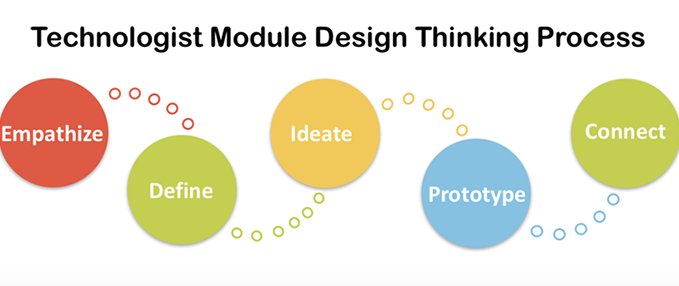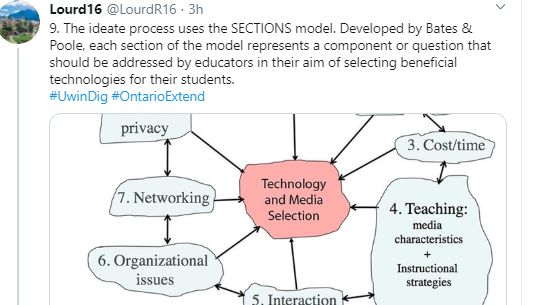In this post, I will be discussing the “Technologist Model” found on Ontario Extend. As future educators, we must aim to integrate tools that assist in our student’s learning and diminish their challenges and stress. The technologist tool provides educators with modules that allow them to advance their teaching and integrate technology in innovative ways.


For this multimedia reflection, I chose to create a twitter essay. I am not too familiar with social media outlets so this was a challenge I was ready to take on. In terms of difficulty, twitter was somewhat confusing, at first. However, I continued to explore my way through the web and it seemed pretty straightforward. This assignment pushed me out of my comfort zone because it encouraged me to express myself in a relevant and educational manner. At first, the thought of presenting oneself on a huge networking platform under trending hashtags was a bit intimidating, but as I continued, it became an insightful experience that allowed me to become more aware of my networking abilities. Just as the technologist module teaches, I was able to navigate through an unfamiliar digital data and acquaint myself with its tools and purposes.

Technology is a big component of modern education. As educators, we have to design and integrate technological tools that appeal to student learning and broaden their knowledge beyond the digital world. Not only is technology teaching students useful skills and keeping them engaged, but it also enhances the traditional way of teaching.


The “design thinking approach” is a process that seeks to understand the user and provide solutions to problems that may not be apparent at a glance. The process aims to provide a solution-based approach to solving problems and find technology that best suits the user’s abilities. This is one of the most useful models an educator could use in the classroom because it identifies one of the key components that many educators seem to lack in: empathy. By empathizing with student’s learning difficulties, the teacher gains a personal perspective about the student and challenge their assumptions of them which then allows them to find better solutions in improving their student’s learning. In order to understand our students, we must identify their problems and form a grasp of who they are as learners. By identifying the student’s challenges, the teacher can design thinking principles that inspire and motivate student learning.

One of the most effective processes is the SECTIONS model. It takes into account key components that influence technological tools which are students, ease of use, costs, teaching functions, interaction, organisational issues, networking, and security and privacy. When choosing new technology, the SECTIONS model is one practical way to approach decision-making about media and technologies for teaching.

After designing the digital tool, it is important to share one’s creation with colleagues and peers for a second revision. It is useful to gain a second input of one’s creation and work in a team collaboration to ask questions such as “what worked?” or “do you have any ideas for me to consider?” which are questions that encourage one to think “outside of the box” and consider oneself from the student’s perspective.

Overall, the technologist module is a very beneficial teaching process because it integrates a wide topic such as technology and narrows it down to specific models that approach decision-making about what technologies to teach. I, for one, see myself using the “design thinking approach” in my future technology-friendly English classroom.
